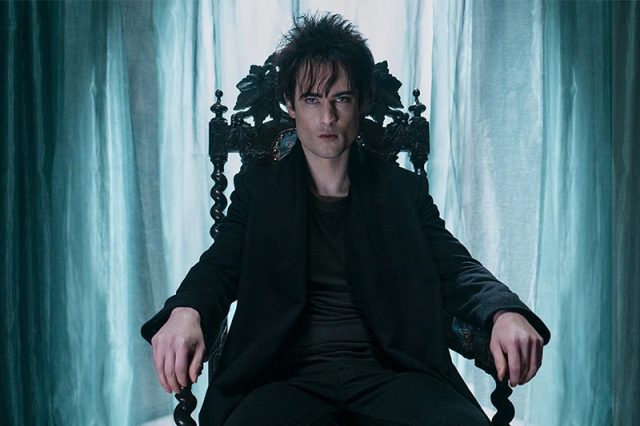As Netflix’s new series, The Sandman, notes, we spend a third of our lives in sleep and dream. In popular culture, The Sandman is a folkloric being who helps us drift off to the land of nod where he controls whether we have nightmares or dreams. He is also the center of Neil Gaiman’s popular comic book series (1989-96), which the new series is based on.
The embodiment of dream as a mythological or literary character has variously been presented as benevolent or sinister, and these contradictory representations reflect our uneasy relationship with the nature and meaning of dreams and nightmares.
These conflicting personifications of dream (and nightmare) reflect our ambiguous cultural ideas of dreaming. Dreaming has been associated with supernatural messages, divinatory arts and psychotherapeutic insights. While seemingly at odds with modernity’s emphasis on rationalism, dreams and works of dreamlike fantasy such as The Sandman continue to provide a much-needed sense of enchantment in our modern age.
Personifications of dream go back far in history. As befits an entity who rules the shifting realm of dreams, he too is unfixed, referred to as Morpheus, Onieros, Dream King, and the Sandman, among others.
Ancient Greek and Roman civilizations understood dreams to be both the messengers and messages. In Homer’s The Iliad, Zeus sends an onieros, a personified dream, to the Greek camp at Troy to encourage Agamemnon to fight. In Hesiod’s The Theogony the oneiroi are the dream children of Nyx or Night. In Roman mythology, Morpheus served Somnus, the god of sleep.
Although a relatively minor figure, Morpheus appealed to classical poets. In Ovid’s Metamorphosis he is one of Somnus’s thousand children, a shapeshifting dream and “master mimic” who moved “on noiseless wings”. Morpheus reveals the psychological sophistication of classical mythology, a rich body of stories that not only accounted for the operation of the natural world but also the interior workings of the human mind.
By the 19th and 20th centuries, Morpheus, or The Sandman, had become a more benevolent character. No longer a servant of the gods, he was frequently evoked as someone who could reunite lost lovers in dreams. Such sentiments are found in Alexander Pushkin’s poem, Morpheus, and in Roy Orbison’s song In Dreams, where the Sandman becomes “a candy-coloured clown” who sprinkles stardust. The Chordettes 1954 hit Mr Sandman asked him to send them a dream lover before they got too old.
Yet the Sandman has also taken on menacing aspects. In E.T.A. Hoffman’s disturbing story, The Sandman (1816), the titular bogeyman is said to throw sand in the eyes of children who won’t go to sleep, causing them to bleed. He then puts them in a bag and takes them to his owl-beaked children who peck out their eyes as food. This more malevolent embodiment of nightmare was updated in the character of Freddy Krueger, star of the Nightmare on Elm Street horror film franchise.
Modern dreams
Gaiman’s Sandman combines both caring and threatening aspects. A figure committed to protecting dreamers and The Dreaming, the place where we go in dreams, he also holds grudges and punishes dream creations who challenge his benignly authoritarian rule.
These personifications of dream and nightmare encourage the unsettling sense that such things come from outside us. Many ancient civilizations credited oneiromancy, the interpretation of dreams in order to foretell the future as a form of supernatural power. Such ideas are put to dramatic use in Shakespeare’s Julius Caesar. Oneiromancy persisted and was updated for an increasingly urban and literate population in the 19th- and 20th-century development of dream books. These popular publications, intended as a form of entertainment, provided an A-Z of dream images that helped dreamers interpret their dreams and foretell their future.
The uninvited, uncontrollable and nonsensical nature of dreams disturbed our modern championing of rationality and reason, causing them to be dismissed as mere unconscious mental play. When the 19th- and early 20th-century pioneers of psychotherapy engaged with dreams, they attempted to rationalise the meaning and function of their seemingly random and illogical content.
Sigmund Freud’s The Interpretation of Dreams (1899) argued dreams provided insight into psychological repression and trauma, much of it of a sexual nature. Applying rationalised interpretations, dreams were not mental junk but telling insights into the forbidden wishes of individual minds. No longer external influences delivered by divine messengers, dreams were firmly grounded within us. Interestingly, the sinister nature of Hoffman’s Sandman story attracted Freud’s attention in his 1919 essay, The Uncanny.
Yet it is Freud’s former friend and rival, Carl Jung, to whom Gaiman’s idea of The Dreaming owes a greater debt. Morpheus’s shared realm of dreamers is the fictional expression of Jung’s notion of the collective unconscious, a place of archetypal figures, symbols, and images that repeatedly appear in all our dreams.
Like all good works of fantasy, The Sandman questions the dominant story western society has repeatedly told itself for over three centuries: that we have become rational, disenchanted, free of the fantastical ideas of the past. As the glut of fantasy serials on Netflix suggests, such a world requires the compensatory enchantment of fantasy, fiction and dreams.
To borrow a line from Tori Amos’s Tear in Your Hand, we will be hanging out with the Dream King for the foreseeable future.![]()
Karl Bell, Reader in Cultural History, University of Portsmouth. This article is republished from The Conversation under a Creative Commons license. Read the original article.
READ: ‘Sandman,’ ‘ONE PIECE,’ ‘Alice in Borderland,’ other upcoming Netflix shows fans should not miss










